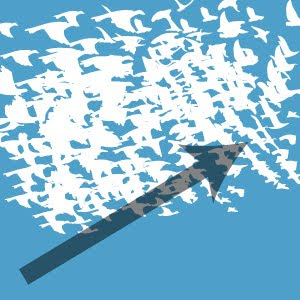
I’m not suggesting that the “crowds” participating in contests and competitions are like fish or bird, but the dynamics of schooling fish when a predator is present makes the crowd behave like an organic “whole”. Moving, swaying and constantly changing shape to keep the ranks closed to the predator.
This may not be the best analogy, but watch what happens when the client gives high marks to a particular solution. It’s not surprising that all the new solutions coming in start to look like the favorite, moving in the same direction. That’s good and bad. It may be good for the client but rough on the crowd. If you have the best new direction it’s hard for everyone else to ignore it, creeping in on your ground-breaking efforts. That’s were the “blind” contests come in. No one sees anyone else’s solutions during the life of the contest. But does this run counter to whole rationale of having a crowdsourced challenge in the first place?





